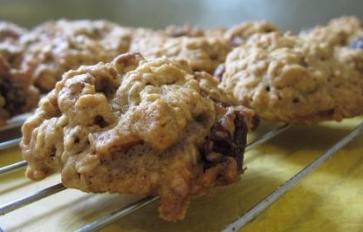
Love them or hate them, beets are an incredibly healthy root. Starchy, sweet, and bursting with nature's nutrients, beetroots are an ancient food with many purposes. Belonging to the same family as chard and spinach, they contain as many phytonutrients as well as the addition of long sought after plant pigments. If you find yourself beet curious, read on to satisfy your fascination.
Ancient beets grew wildly in North Africa, Europe, and Asia. The beet that we know today was cultivated first by the Romans, who used the beets as a dye as well as medicine. It wasn't until this cultivation that the root became a popular food source – as before it had been the greens of the plant. Then in the 19th century, beets became prized for their sugar, as they have the highest sugar concentration of vegetables.
As well as having a high sugar content, beets are brightly pigmented. When chopping the purplish-red beets, the colorful juices can ooze onto your hands, staining them with their bright color. This is caused by the pigment known as betalain. There are two types of betalains: betacyanins and betaxanthins. When the first is dominant, the beets will turn a red-purple color, while when the latter is dominant, the beets will turn yellow.
Betalains are a phytonutrient present in all beet varieties, but it's the red ones that are most known for 'beeturia' – consuming these natural colorful pigments can lead to 'beeturia,' the discoloration of your urine. The reason this occurs is the body does not breakdown the betanins, allowing them to pass through. An estimated 10-15% of Americans experience this condition. It's important to remember this when consuming beets, as it can lead to quite the scare when forgetting.
You might find that eating beets is worth the risk of beeturia since they pack quite a nutritious punch. The betalains in beets are full of antioxidants. Rich in vitamin C, fiber, folate, and manganese, beets are highly sought after for their immune-boosting properties, too.
The combination of antioxidants and anti-inflammatories found in beets may help to reduce the risk of cancer. Studies conducted on red beetroot extract have shown to suppress multi-organ tumors in test animals, and may be effective in breast and prostate cancer as well.
Increasing stamina, beets boost muscle strength. According to WebMD, a study conducted by the Washington University School of Medicine tested a group of nine individuals with heart failure. By giving them concentrated beet juice, the study concluded that the nitrates found in beets increased muscle performance two hours after consumption. Along with improving muscle performance, the phytonutrients in beets can do wonders in detoxifying the body. Purifying the liver as well as the blood, beets are nature's way of cleansing us from nasty toxins.
Beets can be enjoyed cooked or raw. They make a wonderful addition to a salad, taste delicious when blended into juice, can add vibrant color to a root vegetable medley, add a unique twist to hummus, and are a main ingredient in the Russian soup borscht.
If you find yourself hungry for beets, try this Winter Beet Citrus Salad. Delicious and satisfying, it's a refreshing break from all the rich, hearty foods that make up winter meals.
Winter Citrus Salad Recipe
Ingredients:
1 beet, roasted and sliced
1 blood orange, sliced
3 cups arugula
½ avocado, sliced
2 oz goat cheese (optional)
balsamic vinegar and olive oil
- To roast the beet, heat oven to 400°F. Cut off top and bottom, then rub beet in olive oil. Wrap in foil and roast for 50-60 minutes. Remove from foil and let cool. Once beet is cool, peel the skin and discard. Then slice beet into thin slices.
- Toss arugula in desired amount of olive oil and balsamic vinegar. Top with beets, sliced oranges, sliced avocado, and goat cheese. For a vegan version, omit cheese or opt for the vegan version.








